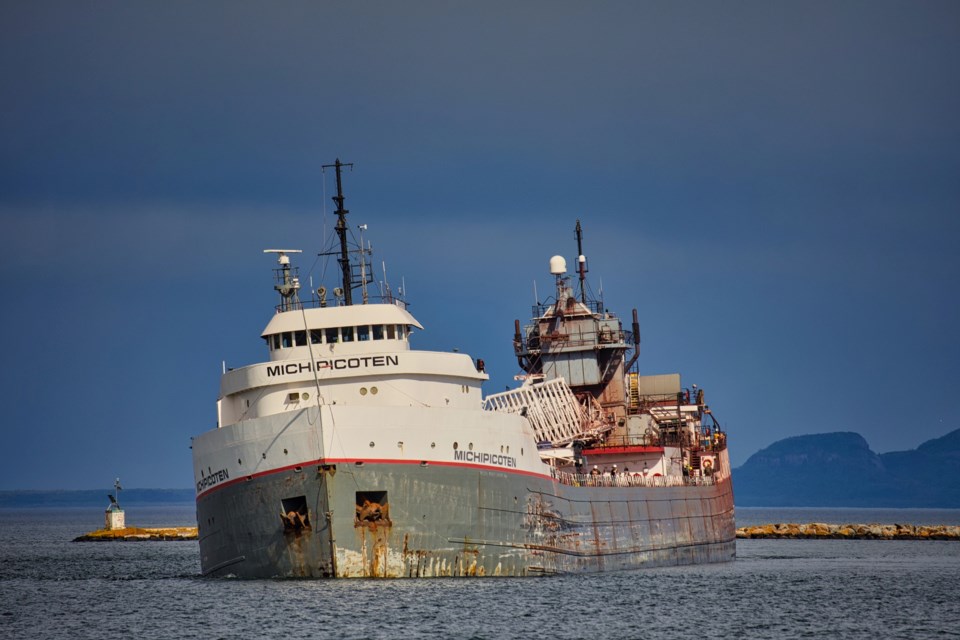THUNDER BAY — A massive crack has been found in the hull of the Michipicoten, the ship that limped into Thunder Bay on the weekend after water started pouring into it on Lake Superior.
Divers have found a four-metre-long crack during an underwater inspection conducted at Keefer Terminal, where the vessel is now tied up.
"This appears to be a result of fatigue/structural failure," a spokesperson for the Transportation Safety Board of Canada told TBnewswatch in an email Monday.
In an interview with TBnewswatch, US Coast Guard spokesperson Lorne Thomas said the rupture is from "the turn of the bilge, which is where the side shell turns to the bottom plate. A 13-foot-long crack was detected by the divers, which is clearly indicative of a hull failure."
The crack is said to be about a quarter of an inch wide.
Thomas said a loud bang the ship's crew reported hearing while the vessel was in deep water likely happened at the time of the hull failure.
"It looks like a hull failure, which could be the result of stress, fatigue, age of the vessel," he said, but cautioned that a full investigation is needed to determine the cause for certain.
"The investigation will look at the entire transit from where the vessel originated its voyage, and to see if there's a possibility that another event, like striking a submerged object, or running aground, initiated that hull failure which eventually completely failed out in the middle of Lake Superior."
He added "there's no indication" at present that the ship struck something first, but that Canadian and US authorities will certainly look at that possibility.
"We won't definitively know if an event preceded the hull failure until the investigation is complete, and a big part of that is gonna be when the vessel gets up on dry dock, they offload the cargo. de-water the vessel, and take a good look at the damage."
Initially, Thomas said, Transport Canada and the US Coast Guard contemplated separate investigations, but they are now discussing a cooperative probe in which Canadian officials would take the lead.
The Michipicoten had picked up a cargo of iron ore pellets for Algoma Steel at Two Harbors, Minnesota and was en route to Sault Ste. Marie on Saturday morning when the incident occurred.
At one point it was listing by 15 degrees before pumps alleviated the flooding.
Half the 22-person crew was taken off the 698-foot vessel but it was successfully escorted into Thunder Bay harbour and docked at Keefer Terminal.
TBnewswatch reached out to Lower Lakes Towing of Port Dover, Ontario the subsidiary of U.S.-based Rand Logistics which owns the ship, but was told the company has no statement to make at this time, as it is still assessing the situation.
According to information posted by Rand Logistics, the Michipicoten was launched in 1952, but underwent multiple modifications over the following years.
In 1957 it was lengthened by 72 feet, and in 1980 it was converted to a self-unloader to prolong its life.
Thirty years later, it was converted from steam power and oil-fired boilers to diesel propulsion.
Chris Heikkinen, CEO of the Thunder Bay Port Authority, said arrangements have been made for the vessel to remain at Keefer for as long as necessary.
Heikkinen said it's not uncommon for ships to require emergency repairs, which is why the port authority maintains a vacant berth at Keefer.
He noted "the great binational effort" into ensuring the safety of the Michipicoten and its crew "because obviously that's the number one priority, and everyone made it back to shore safe and sound. So we're just really thrilled with that outcome, and happy to have played a small role."
